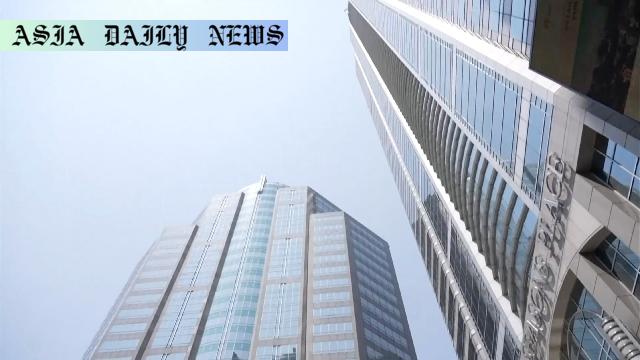Earthquake: High-rise buildings in Bangkok swayed up to 1.6 meters during a massive earthquake in Myanmar, lasting over five minutes.
Tremors from a magnitude 7.7 earthquake in Myanmar caused high-rise buildings in Bangkok to sway.
The horizontal displacement of up to 1.6 meters was classified as Level 3 intensity.
Swaying lasted over five minutes, reflecting the impact of long-period ground motion.
The phenomenon resembled the effects seen during the 2011 earthquake in Japan.

Understanding the Impact of Earthquakes on Bangkok’s High-Rises
The city of Bangkok experienced an alarming phenomenon in March, as tremors from a neighboring earthquake in Myanmar caused high-rise buildings to sway noticeably. Experts have outlined that this extraordinary occurrence stemmed from the magnitude 7.7 earthquake in Myanmar. Although Bangkok lies over 1,000 kilometers from the quake’s epicenter, its skyscrapers endured significant horizontal displacements, reaching up to 1.6 meters. This unusual seismic influence captivated the attention of global scientists and seismology experts.
Professor Maruyama Yoshihisa from Chiba University analyzed the data and likened the effects to those felt during the 2011 Great East Japan Earthquake, which was also characterized by “long-period ground motion.” Such ground motion involves powerful earthquake tremors traveling great distances, causing extended swaying in tall structures. In Bangkok, the oscillations persisted for over five minutes, leading experts to classify the intensity as a Level 3 event on the Japan Meteorological Agency’s four-tier scale for long-period ground motion intensity. Observations also included rooftop pools cascading water onto the streets below, highlighting the energy’s sustained effect on structures.
Mechanisms Behind Long-Period Ground Motion
At the heart of this phenomenon is “long-period ground motion,” a seismic effect where tremors originating from powerful earthquakes can travel across vast distances. Unlike localized tremors that might be felt near the epicenter, this motion impacts tall structures further away due to their natural frequencies aligning with the wave patterns. High-rise buildings in any major city, including Bangkok, are particularly susceptible to this phenomenon because their heights and structural designs resonate with the frequency of such earthquake waves. The result is noticeable, prolonged swaying, as seen in Bangkok’s skyscrapers and even in Tokyo during previous seismic events.
Such ground motions are rare but are becoming an increasingly significant global concern. As cities expand vertically with taller, more ambitious structures, assessing and mitigating the risks posed by long-period ground motion have gained renewed urgency. The displacement observed in Bangkok emphasizes the importance of seismic-resilient architectural practices not just in traditional earthquake zones but also in areas thought to be relatively protected due to their vast distance from known earthquake-prone regions.
Lessons Learned and the Role of Advanced Engineering
Bangkok’s recent experience highlights the necessity for advanced monitoring and structural design capable of absorbing such sustained tremors. Seismometers strategically placed throughout urban hubs provide critical data to understand how ground motion propagates during massive earthquakes. Combining this data with ongoing research into architectural improvements can contribute to reducing damage and ensuring public safety in future seismic events.
For example, in Bangkok’s case, engineers and urban planners could focus on retrofitting older high-rises to meet modern earthquake-resilient standards. Structural dampening systems and base isolators, commonly deployed in seismically active areas like Japan and California, might become standard requirements in such regions. These measures could help dissipate the energy generated by such distant, long-period seismic occurrences, protecting property and lives.
The Global Implications of Seismic Events
The tremors that shook Bangkok remind us that seismic activity is a global concern, transcending traditional fault lines or geographic boundaries. As cities with tall skyscrapers emerge across different parts of the globe, even regions traditionally considered geologically stable cannot ignore the potential impacts of long-period ground motion caused by massive earthquakes occurring thousands of kilometers away. Preparing for this eventuality by fostering an international collaboration between city planners, geologists, and engineers is critical in adapting to this emerging challenge.
The need for building codes, structural reinforcements, and enhanced seismic monitoring is no longer confined to traditional seismic zones. Severe urban impacts similar to Bangkok’s, culminating in cascading rooftop water and structural sway, are scenarios that must inform future design standards. As in the cases of Tokyo and Bangkok, urban populations across the globe could benefit from adopting resilience as a guiding principle in urbanization, ensuring the effects of long-period ground motion are mitigated effectively.



Commentary
An Eye-Opening Reminder of Nature’s Power
The recent revelations about Bangkok’s skyscrapers swaying due to a massive earthquake over 1,000 kilometers away in Myanmar are a stark reminder of nature’s far-reaching influence. It is remarkable to think that a city typically considered insulated from the direct consequences of seismic activity could experience such powerful effects. Events like this challenge our understanding of safety, planning, and engineering in cities far from active fault lines. Professionals and city planners must take this instance as a learning opportunity, preparing for unpredictable but potentially devastating scenarios.
The Growing Need for Resilient Urban Planning
One significant takeaway is the crucial role that urban planning and architecture play in safeguarding millions of lives. The Bangkok case illustrates how structures, even those built with modern techniques, can face vulnerability when exposed to long-period ground motion. Given that seismic activity can traverse significant distances, cities worldwide need to prioritize advanced engineering solutions such as dampening systems. Retrofitting existing buildings to meet more stringent seismic safety requirements could also act as a proactive measure safeguarding urban populations against future events of this nature.
A Global Call for Enhanced Preparedness
Perhaps the most critical message from this event is that earthquakes are not just regional or localized phenomena. As our global cities continue to grow in height and density, even regions previously thought immune from seismic effects must consider preparedness as a key aspect of urban development. By investing in cutting-edge monitoring technologies and fostering cross-border collaboration in earthquake-related research, nations can help ensure a safer urban future in an unpredictable world. Preparedness remains our most powerful defense against nature’s surprises.